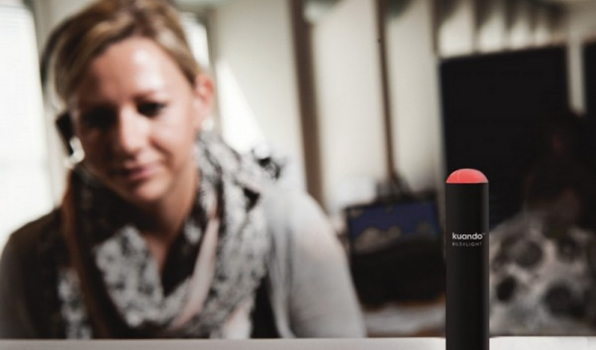Ah, the open office plan: a haven for creativity, spontaneity, and collaboration. If you’ve ever worked in one, you probably know these as code words for ceaseless noise, distractions, and being forced to listen to phone calls about the veterinary issues of your co-workers’ cats.
And the research backs this up: Studies show that open offices can hurt productivity and lead to dissatisfied employees. (That’s a lose-lose, in case you’re keeping track.)
So it should be no surprise that workers faced with unfortunate office architecture have come up with creative ways to cope. Friends of mine report doing everything from hanging silk flowers from their desk to signal when they are busy to conspiring with co-workers to call them any time they see a potential interruptor approaching.
“I’ve talked to offices who have told me: ‘We’re using red Solo cups and green Solo cups to let people know when we’re busy or available,’ ” says Mitch Friend, business development manager at Denmark-based Plenom. “The problem is, nobody ever remembers to change these things. If it’s not automatic, it doesn’t work.”
To fix this, Plenom sells a device called the Kuando Busylight. The light-up LED beacon attaches to the top of a monitor or cubicle wall and changes from red to green to let passersby know whether they should leave you alone. It syncs up with Microsoft’s Lync and Skype for Business software and automatically adjusts its color based on your status in the messaging program. So if your Skype is set to “Busy,” your Busylight automatically flips to red, and so on.
It works well for avoiding distractions, says Andrew Wadsworth, a technologist at the University of Illinois who has used the device for the past two years. “As soon as people see the little light, they know I’m busy,” he says. “A lot of people here talk without headsets or listen to music through headsets. So without this, it’s really hard to tell if somebody’s busy or on a call without interrupting them to ask.”
Busylight connects to a computer via USB and also comes in configurations for folks who don’t use Skype for Business. It can also serve as a signal for incoming calls—if you see it flash, you know to run back to your desk. The device costs about $40 for individual users, though Friend says most of the company’s customers are offices that buy them at bulk rates for employees.
Of course, the efficacy of devices such as the Busylight depends entirely on your fellow employees understanding and respecting their signal—a tall order in some workplaces. And if you don’t use Skype for Business—or diligently update your status in the software—it won’t really save you any effort over those Solo cups. Though your office would look less like a frat house.
Salt Lake City company Wired In offers a simpler solution to the same problem and is taking preorders on Kickstarter for its product. It’s a nice-looking Bluetooth sign that sits on a desk and lights up to “tell people to leave you alone,” as the company puts it. Users can order custom phrases, or purchase stock options such as “Wired In,” “In The Zone,” and “Go Away.” Unlike the Busylight, it does not automatically adjust its status, and makes no promises as to how co-workers will react to its cheeky suggestions. If you are looking for something a little more low-tech, Etsy has a vast assortment of handmade “Do Not Disturb” signs that you can hang by your desk.
Of course, if all else fails—or these gizmos feel just a bit too passive-aggressive for your taste—you can always reach for the gadget that has become the closest thing modern culture has to a universal “Busy” sign: a substantial pair of noise-canceling headphones.
From: Bloomberg

